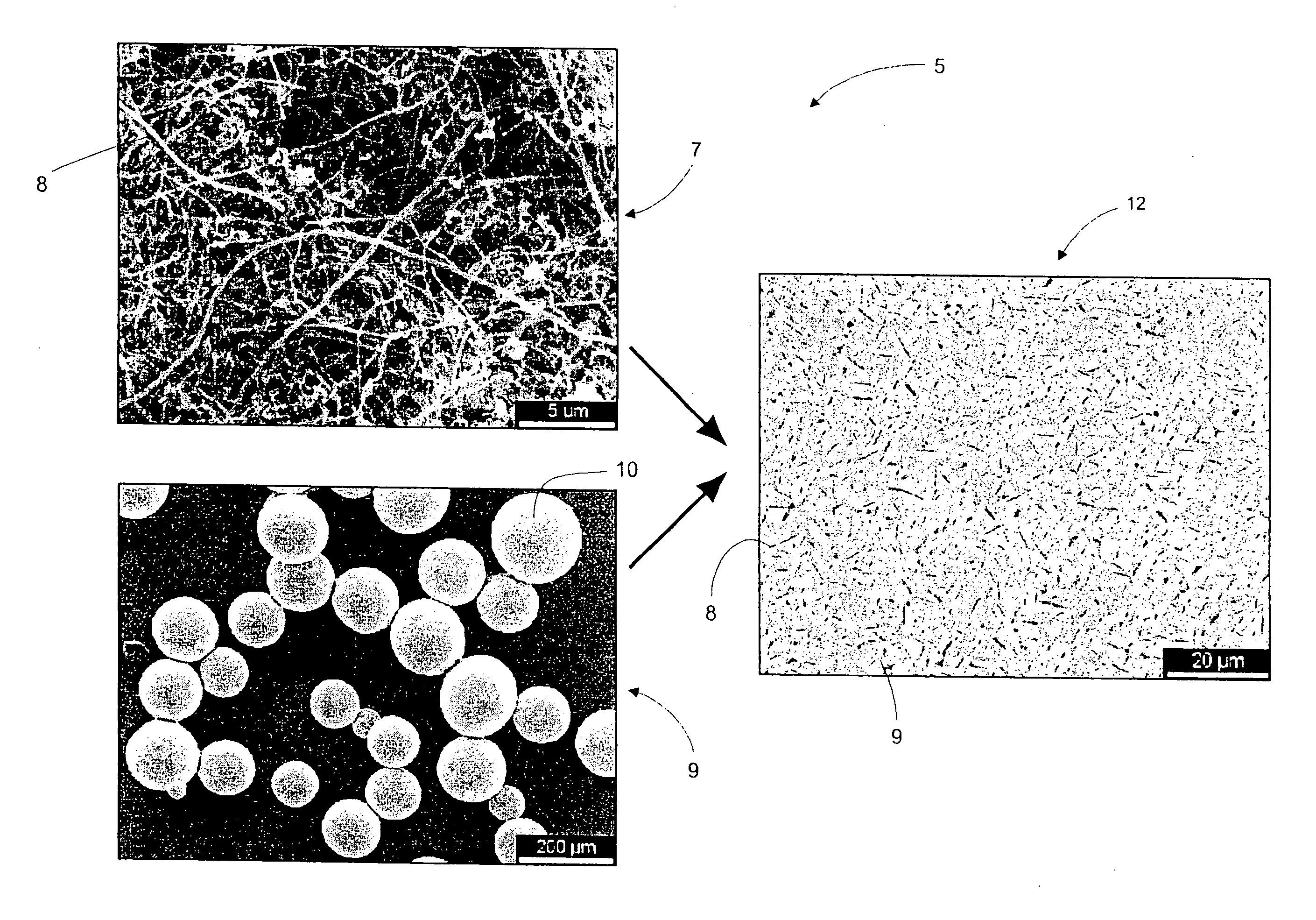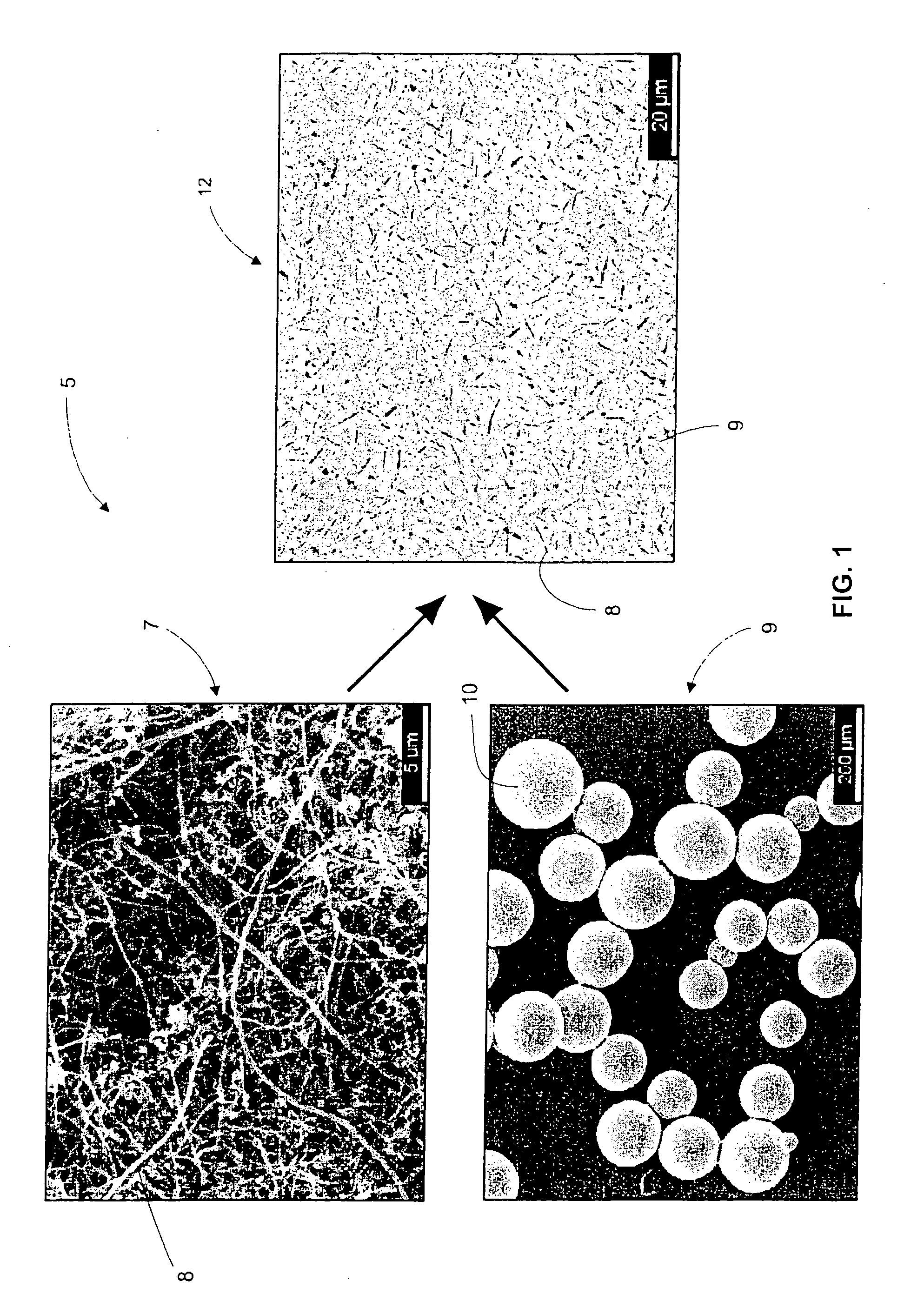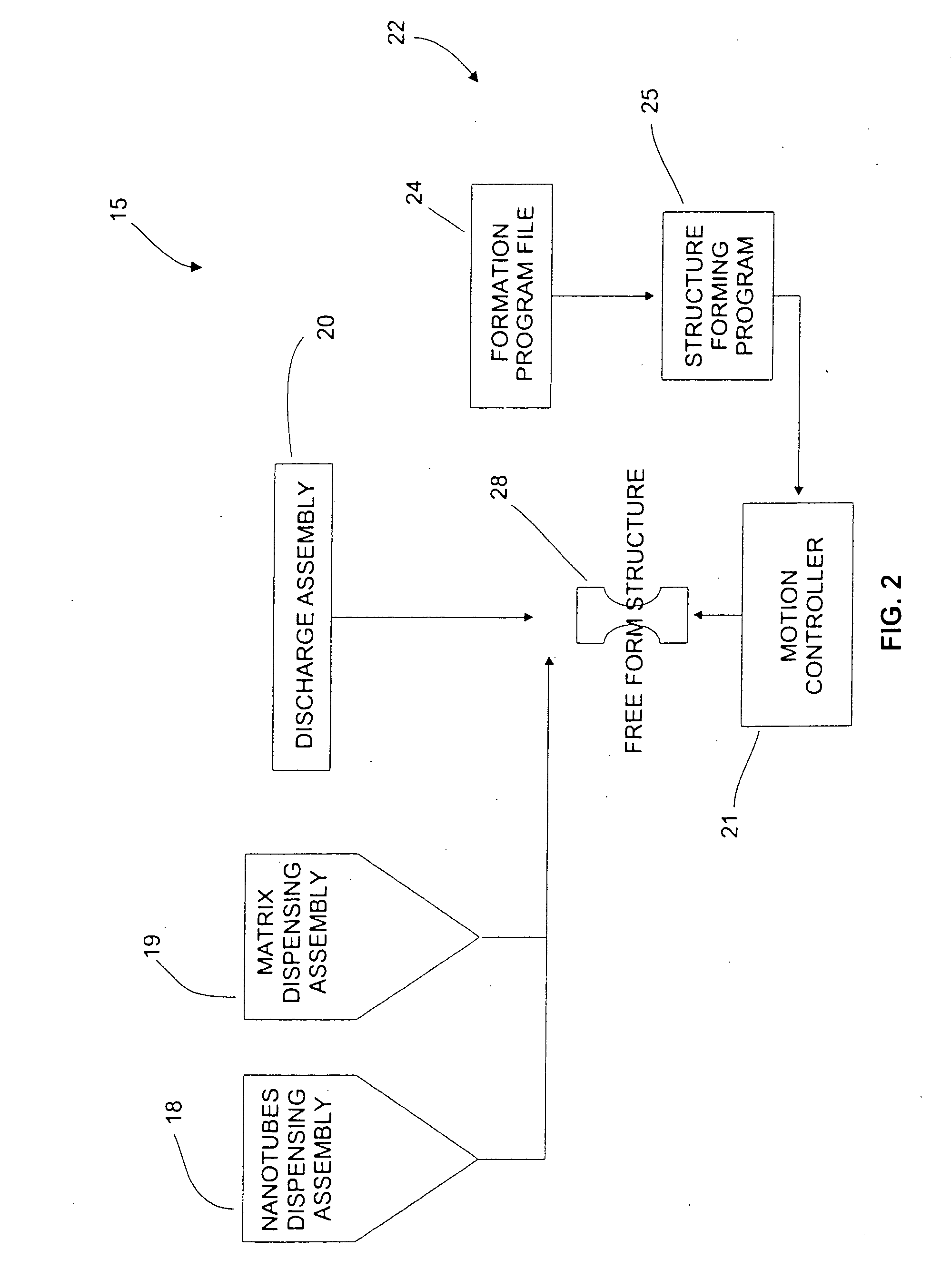Rapid manufacturing of carbon nanotube composite structures
a carbon nanotube and composite structure technology, applied in nanostructure manufacturing, additive manufacturing processes, transportation and packaging, etc., can solve the problems of carbon nanotube composites that are often difficult to produce, application of non-optimal composites for use by a host system, fractures, wear and tear
- Summary
- Abstract
- Description
- Claims
- Application Information
AI Technical Summary
Benefits of technology
Problems solved by technology
Method used
Image
Examples
Embodiment Construction
[0034] Preferred embodiments of the present invention are illustrated in the Figures, like numerals being used to refer to like and corresponding parts of the various drawings. FIG. 1 illustrates one aspect, among others, of a process 5 for combining carbon nanotubes 7 with a matrix 9 to produce a composite 12. In another aspect of the present invention shown in FIG. 5, by discretely forming the composite 12 into composite nodal elements 89, a free-form structure 99 is created, via the process 5, by arranging one composite nodal element 89 with respect to another. In effect, composite nodal elements act as “building blocks” that define a free-form structure.
[0035] In one exemplary embodiment, as shown in FIG. 1, carbon nanotube fibers 8 are dispersed between a matrix material 10 provided by the matrix 9 to reinforce the overall free-form structure. By analogizing with reinforced concrete, for example, the carbon nanotube fibers 8 are analogous to reinforcing materials such as steel...
PUM
| Property | Measurement | Unit |
|---|---|---|
| length | aaaaa | aaaaa |
| length | aaaaa | aaaaa |
| length | aaaaa | aaaaa |
Abstract
Description
Claims
Application Information
 Login to View More
Login to View More - R&D
- Intellectual Property
- Life Sciences
- Materials
- Tech Scout
- Unparalleled Data Quality
- Higher Quality Content
- 60% Fewer Hallucinations
Browse by: Latest US Patents, China's latest patents, Technical Efficacy Thesaurus, Application Domain, Technology Topic, Popular Technical Reports.
© 2025 PatSnap. All rights reserved.Legal|Privacy policy|Modern Slavery Act Transparency Statement|Sitemap|About US| Contact US: help@patsnap.com



